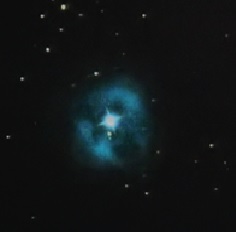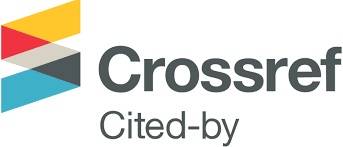PLANETARY NEBULAE
NGC 1514 – NGC 40
DOI:
https://doi.org/10.59973/emjsr.15Keywords:
Planetary Nebulae, White Dwarfs, Chemical Composition, Stellar Evolution, Galaxy Evolution, Astronomical Spectroscopy, Emission LinesAbstract
This project compares two planetary nebulae (NGC 1514 and NGC 40) and studies the difference between them in their chemical composition. Observations of the two planetary nebulae were done at Clanfield Observatory with the 24-inch Ritchey-Chrétien telescope. This project found that both planetary nebulae have a similar nebula spectrum but a different central star spectrum. The NGC 1514 central star is a type ‘DA white dwarf’. While the NGC 40 central star is a type ‘DQ white dwarf’. The different classes of white dwarfs could be a result of AGB thermal pulsations or superwind phases.
References
A stellar finding about shapes in space, cosmosmagazine.com, Sep. 18, 2020. https://cosmosmagazine.com/space/a-stellar-finding-about-shapes-in-space/
Planetary nebula, www.cs.mcgill.ca. https://www.cs.mcgill.ca/~rwest/wikispeedia/wpcd/wp/p/Planetary_nebula.htm
NASA, Background: Life Cycles of Stars, Nasa.gov, May 07, 2015. https://imagine.gsfc.nasa.gov/educators/lessons/xray_spectra/background-lifecycles.html
Hydrostatic Equilibrium | COSMOS, astronomy.swin.edu.au. https://astronomy.swin.edu.au/cosmos/H/Hydrostatic+Equilibrium
Nola Taylor Redd, White Dwarfs: Compact Corpses of Stars, Space.com, Oct. 11, 2018. https://www.space.com/23756-white-dwarf-stars.html
National Schools' Observatory, Life Cycle of a Star | National Schools’ Observatory, Schoolsobservatory.org, 2019. https://www.schoolsobservatory.org/learn/astro/stars/cycle
Hydrostatic Equilibrium 9.1 Derivation. Available: http://astronomy.nmsu.edu/jasonj/565/docs/09_17.pdf
C. Honsberg and S. Bowden, Energy of Photon | PVEducation, Pveducation.org, 2019. https://www.pveducation.org/pvcdrom/properties-of-sunlight/energy-of-photon
Crystal Ball Nebula (NGC 1514) – Constellation Guide, www.constellation-guide.com. https://www.constellation-guide.com/crystal-ball-nebula/
NGC 40 - Bow Tie Nebula - Planetary Nebula | freestarcharts.com, freestarcharts.com. https://freestarcharts.com/ngc-40
Planetary Nebula | National Schools’ Observatory, www.schoolsobservatory.org. https://www.schoolsobservatory.org/learn/astro/stars/cycle/planetary
E. Gough, Why do Planetary Nebulae Look the Way They Do?, Universe Today, Jan. 25, 2021. https://www.universetoday.com/149732/why-do-planetary-nebulae-look-the-way-they-do/
Elemental Abundances | Center for Astrophysics, www.cfa.harvard.edu. https://www.cfa.harvard.edu/research/topic/elemental-abundances
Lecture 8. White Dwarfs, Neutron Stars and Black Holes, astro.dur.ac.uk. http://astro.dur.ac.uk/~done/e8.html
Spectra, stars.astro.illinois.edu. http://stars.astro.illinois.edu/sow/spectra.html
M. Peimbert, A. Peimbert, and G. Delgado-Inglada, Nebular Spectroscopy: A Guide on H ii Regions and Planetary Nebulae, Publications of the Astronomical Society of the Pacific, vol. 129, no. 978, p. 082001, Jun. 2017, doi: https://doi.org/10.1088/1538-3873/aa72c3
B. W. Carroll and D. A. Ostlie, An introduction to modern astrophysics, 2nd ed. Cambridge Etc.: Cambridge University Press, 2018.
Planetary nebula - Chemical composition, Encyclopedia Britannica. https://www.britannica.com/science/planetary-nebula/Chemical-composition
Wolf-Rayet Star | COSMOS, astronomy.swin.edu.au. https://astronomy.swin.edu.au/cosmos/W/Wolf-Rayet+Star
J. B. Rodríguez-González et al., Adjusting the bow-tie: a morpho-kinematic study of NGC 40, Monthly Notices of the Royal Astronomical Society, vol. 515, no. 2, pp. 1557–1567, Jul. 2022, doi: https://doi.org/10.1093/mnras/stac1761.
H. Todt, M. Peña, W.-R. . Hamann, and G. Gräfener, The central star of the planetary nebula PB 8: a Wolf-Rayet-type wind of an unusual WN/WC chemical composition, Astronomy & Astrophysics, vol. 515, p. A83, Jun. 2010, doi: https://doi.org/10.1051/0004-6361/200912183.

Downloads
Published
Versions
- 2023-11-07 (2)
- 2023-10-11 (1)
How to Cite
Issue
Section
License
Copyright (c) 2023 Shahd Eliwa

This work is licensed under a Creative Commons Attribution 4.0 International License.














